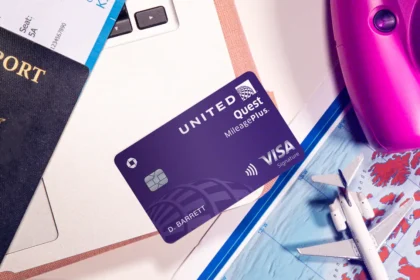After seven years of traveling more than 120 days annually across six continents, through arctic winters and tropical summers, for business meetings and mountain treks, I’ve learned one fundamental truth: the difference between seasoned travelers and stressed-out tourists isn’t how much they pack—it’s how little.
I’ve made every packing mistake in the book. I’ve dragged 70-pound suitcases through cobblestone streets in Prague, paid hundreds in overweight baggage fees, and arrived at destinations with three pairs of shoes I never wore. I’ve also traveled for two weeks with nothing but a backpack and felt more prepared than ever before.
Through trial, error, and countless flights, I’ve developed a set of non-negotiable packing rules that have transformed my travel experience from chaotic luggage management to effortless mobility. These aren’t suggestions—they’re the hard-learned principles that separate amateur packers from travel professionals.
Why Overpacking Is More Than Just a Weight Problem
Before diving into the rules, it’s crucial to understand why overpacking matters beyond airline fees and sore shoulders. Overpacking creates a cascade of travel problems that compound throughout your entire trip.
Mental Load and Decision Fatigue: When you overpack, you’re not just carrying extra weight—you’re carrying extra decisions. Every morning becomes a paralyzing exercise in choosing from too many options. Studies show that having too many choices actually decreases satisfaction with our final decision and increases anxiety.
Reduced Mobility and Spontaneity: Heavy luggage anchors you to predictable travel patterns. You’ll choose taxis over walking, miss opportunities to explore side streets, and avoid spontaneous adventures that require mobility. The freedom that draws us to travel gets suffocated under the weight of our possessions.
Increased Stress and Vulnerability: More luggage means more things to lose, damage, or worry about. You become a target for theft, face greater challenges with transportation, and spend mental energy managing belongings instead of experiencing destinations.
Hidden Financial Costs: Beyond baggage fees, overpacking costs money through taxi rides you wouldn’t otherwise need, porter tips, larger hotel rooms for storage space, and replacement items for things damaged in overstuffed suitcases.
The Golden Rules of Minimalist Packing
Rule #1: The One-Week Maximum Principle
Pack for one week maximum, regardless of trip length. This is my most fundamental rule and the one that revolutionized my packing approach. Whether I’m traveling for five days or five weeks, I pack the same amount of clothing.
The mathematics are simple: after one week of wear, everything needs washing anyway. Hotel laundry, laundromats, or even sink washing become part of your travel routine rather than emergency measures. This rule forces you to choose only your most versatile, highest-quality pieces.
For trips longer than a week, identify laundry solutions before you depart. Research whether your accommodations offer laundry services, locate nearby laundromats, or plan for hand-washing essentials. This advance planning eliminates the anxiety that drives overpacking.
Rule #2: The 3-2-1 Clothing Formula
This formula has never failed me across any climate or occasion: 3 bottoms, 2 shoes, 1 jacket/outer layer that works for all weather conditions you’ll encounter.
3 Bottoms: Choose based on your activities and destination climate. This might be three pairs of jeans, two pants and one dress, or two shorts and one pair of pants. The key is ensuring each piece works with multiple tops and shoes.
2 Shoes: One comfortable walking shoe for daily exploration and one dressier option for evenings or special occasions. Choose shoes that can pull double duty—leather sneakers that work for both walking and dinner, or ankle boots that transition from day hiking to city exploration.
1 Outer Layer: Invest in one high-quality jacket that handles all weather scenarios you’ll face. This might be a packable down jacket for cold climates, a lightweight rain jacket for unpredictable weather, or a versatile blazer for business travel.
Rule #3: The 5-4-3 Top Strategy
Pack 5 tops maximum, following the 4-3 distribution: 4 casual/daily wear tops and 3 that can transition to evening or dressier occasions (with one top serving double duty in both categories).
Choose tops that mix and match with all your bottoms. Stick to a limited color palette—I travel with variations of navy, white, gray, and one accent color. This ensures everything coordinates and eliminates the mental energy of matching outfits.
Prioritize quality over quantity. Five well-made tops that feel good and look polished will serve you better than eight mediocre pieces that wrinkle, fade, or lose their shape during travel.
Rule #4: The Duplicate Essential Rule
Never pack duplicates of non-essential items, but always pack duplicates of true essentials. This means two phone chargers, two pairs of underwear for every day (plus two extra), and two of any medication you can’t easily replace.
However, resist the urge to pack “backup” items that aren’t truly essential. You don’t need two hair dryers, three books, or multiple pairs of jeans “just in case.” Trust that you can purchase replacements for non-essential items if needed.
Rule #5: The Wear-Don’t-Pack Heavy Items Rule
Always wear your heaviest items during travel rather than packing them. This includes boots, heavy coats, thick sweaters, and bulky accessories. Not only does this save luggage space, but airline weight limits apply to packed items, not what you’re wearing.
Layer strategically for flights. You can always remove layers once you’re seated, but you can’t add weight to your luggage without fees. I routinely board flights wearing hiking boots, a heavy jacket, and multiple layers, then adjust my clothing for comfort once airborne.
Rule #6: The Multi-Purpose Item Mandate
Every item you pack should serve at least two purposes, with bonus points for three or more functions. A sarong works as a beach cover-up, blanket, towel, and privacy screen. A lightweight merino wool shirt regulates temperature, resists odors, and transitions from workout gear to casual wear.
Before packing any item, ask yourself: “What are three ways I could use this during my trip?” If you can’t identify multiple uses, leave it home or find a more versatile alternative.
Examples of excellent multi-purpose items include:
- Wrinkle-free pants that work for hiking and dinner
- Packable down jackets that serve as pillows
- Sarongs for multiple functions
- Quality sneakers suitable for walking and casual dining
- Multipurpose toiletries (shampoo that works as body wash)
Rule #7: The Strategic Laundry Planning Rule
Plan your laundry strategy before you pack. Research laundry options at your destination and factor washing into your itinerary. This mental shift—from seeing laundry as an emergency to viewing it as a regular travel activity—eliminates the fear that drives overpacking.
Pack a small amount of concentrated laundry detergent or laundry sheets for hand-washing. Identify which items you’re comfortable hand-washing versus those that need professional cleaning. Choose fabrics that wash and dry quickly when possible.
Rule #8: The Climate-Specific Adaptation Rule
Adapt your packing approach based on your destination’s climate, but maintain the same quantity limits. For cold climates, focus on layering pieces rather than packing more items. For hot climates, prioritize lightweight, breathable fabrics in the same quantities.
Cold weather packing focuses on base layers, mid-layers, and outer shells that can be combined for warmth. Hot weather packing emphasizes sun protection, moisture-wicking fabrics, and versatile pieces that work in air conditioning and heat.
Don’t pack for every possible weather scenario—pack for the most likely conditions and prepare to adapt. Weather predictions beyond 7 days are unreliable anyway, so packing for hypothetical situations usually results in carrying unused items.
Advanced Packing Strategies for Frequent Travelers
The Capsule Wardrobe Approach
Develop a travel capsule wardrobe with a cohesive color scheme where every piece coordinates with every other piece. This approach minimizes decision fatigue while maximizing outfit combinations from minimal items.
Choose a base color (navy, black, or gray) and one or two accent colors. Ensure all shoes work with all bottoms, and all tops complement all bottoms. This systematic approach to color coordination makes packing faster and traveling more stylish.
The Pre-Trip Wardrobe Test
Two weeks before major trips, I wear only the clothes I plan to pack. This real-world testing reveals which pieces I actually reach for versus those that seem good in theory. Items that sit unworn during the test week get removed from my packing list.
This practice also helps identify gaps in your travel wardrobe. If you find yourself wishing for specific items during your test week, add them to your packing list or shopping list for future trips.
The Photography Consideration Factor
If sharing travel photos is important to you, consider this when selecting your limited wardrobe. Choose pieces that photograph well and create variety in your images without requiring multiple outfits per day.
One dress that works for both day and evening photos serves you better than three outfits that only work in specific contexts. Focus on pieces that create different looks through styling rather than requiring complete outfit changes.
Common Overpacking Mistakes and How to Avoid Them
The “What If” Scenario Trap
The biggest packing mistake is preparing for every possible scenario. “What if it rains?” “What if I get invited to a fancy dinner?” “What if I decide to go hiking?” These questions lead to packing for hypothetical situations rather than planned activities.
Instead, pack for your actual itinerary plus one level up or down in formality. If your trip focuses on casual sightseeing, pack mostly casual clothes with one dressier option. Don’t pack a cocktail dress for a hiking trip or hiking boots for a city break unless they serve multiple purposes.
The Souvenir Space Fallacy
Many travelers pack light initially but leave space for souvenirs, then fill that space with “just in case” items. This approach backfires because you end up carrying unnecessary items throughout your trip rather than useful purchases.
Start with strategic minimal packing. If you want souvenir space, pack a lightweight foldable bag rather than leaving empty space in your main luggage. Alternatively, plan to ship purchases home or embrace consumable souvenirs like local food or experiences.
The Brand New Item Experiment
Never pack items you haven’t worn or tested at home. Travel is not the time to experiment with new shoes, unfamiliar fabrics, or untested toiletries. Every packed item should be a proven performer in your regular wardrobe.
If you want to upgrade your travel gear, start incorporating new items into your daily routine weeks before your trip. This gives you time to identify any issues and ensures you’re comfortable with everything you’re bringing.
READ ALSO: The One Thing I Always Do Before Vacation That Makes Coming Home So Much Easier
Toiletries and Personal Items: The Minimalist Approach
The Essential-Only Toiletry Kit
Limit toiletries to absolute essentials: toothbrush, toothpaste, deodorant, shampoo, face wash, moisturizer, and any prescription medications. Resist the urge to pack your entire bathroom cabinet.
Choose multi-purpose products whenever possible. A tinted moisturizer with SPF eliminates the need for separate foundation, moisturizer, and sunscreen. A quality lip balm with color can replace lipstick for casual looks.
The Local Purchase Strategy
Plan to purchase certain toiletries at your destination rather than packing them. Shampoo, body wash, and basic skincare items are available worldwide and purchasing locally saves luggage space while giving you flexibility to try regional products.
However, stick with familiar brands for items that affect your skin or health. International travel isn’t the time to discover you’re allergic to unfamiliar ingredients in local products.
Technology and Electronics: The Streamlined Setup
The One-Device Philosophy
Minimize electronic devices by choosing items that serve multiple functions. A smartphone can replace a camera, GPS, music player, and e-reader for most travelers. A laptop can handle work tasks that might otherwise require multiple devices.
Resist the urge to pack backup electronics unless you’re traveling to remote areas where replacements are impossible to find. Major cities worldwide sell phone chargers, adapters, and basic electronics if needed.
The Cord Management System
Use a single cord organizer to manage all charging cables and adapters. Pack only the cords you’ll actually use—if you’re not planning to use your tablet, don’t pack its charger “just in case.”
Invest in multi-port charging stations that can handle all your devices simultaneously. This reduces the number of individual chargers you need to pack and ensures you can charge everything from one outlet.
Packing for Different Trip Types
Business Travel Packing
Business travel requires the most strategic packing because professional appearance is non-negotiable. Focus on wrinkle-resistant fabrics in coordinating colors that mix and match easily.
Pack one extra day’s worth of professional clothes beyond your planned meetings to account for delays or unexpected opportunities. However, resist packing multiple options for the same occasion—choose your best pieces and wear them confidently.
Adventure Travel Packing
Adventure travel packing focuses on performance and durability over variety. Choose technical fabrics that handle multiple activities and weather conditions. Prioritize items that serve specific functional purposes over fashion considerations.
Research gear rental options at your destination for specialized equipment. Renting climbing gear, skiing equipment, or water sports accessories saves significant luggage space and ensures you have properly maintained, location-appropriate equipment.
Long-Term Travel Packing
For trips longer than a month, the temptation to pack more becomes overwhelming. Resist this urge by remembering that longer trips actually require less variety because you’ll establish routines and preferences for specific items.
Focus on building a highly functional base wardrobe that you’ll be comfortable wearing repeatedly. Quality becomes even more important for long-term travel because items will see heavy use and frequent washing.
The Financial Benefits of Minimalist Packing
Avoiding Airline Fees
Airlines increasingly charge for checked baggage, overweight bags, and additional items. Mastering carry-on-only packing eliminates these fees entirely while providing the flexibility to take advantage of last-minute flight deals that might not include baggage allowances.
Calculate the annual savings from avoiding baggage fees. For frequent travelers, these savings can fund additional trips or upgrades to better accommodations.
Reducing Transportation Costs
Lighter packing reduces transportation costs at destinations. You can walk instead of taking taxis, use public transportation more easily, and avoid porter fees. These savings add up significantly over multiple trips.
Investment in Quality Over Quantity
Minimalist packing encourages investment in fewer, higher-quality items that perform better and last longer. While the initial cost might be higher, quality pieces cost less per wear over time and enhance your travel experience.
Your Personal Packing Evolution
Developing minimalist packing skills is an evolution, not an instant transformation. Start by implementing one or two rules per trip and gradually adopt more sophisticated strategies as you gain confidence.
Keep a packing journal noting what you wore, what you didn’t use, and what you wished you had brought. This data helps refine your packing decisions for future trips and builds confidence in your minimalist approach.
Remember that perfect packing is a skill that develops over time. Every overpacking mistake teaches valuable lessons about your true travel needs versus imagined requirements.
The goal isn’t to pack as little as possible—it’s to pack exactly what you need and nothing more. Master these rules, and you’ll discover that traveling light doesn’t mean traveling with less. It means traveling with freedom, flexibility, and the confidence that comes from true preparedness. Your future self, walking effortlessly through airport terminals and exploring destinations with ease, will thank you for every item you chose to leave behind.
In another related article, The Post-Vacation Slump Is Real—Here’s How to Snap Out of It







